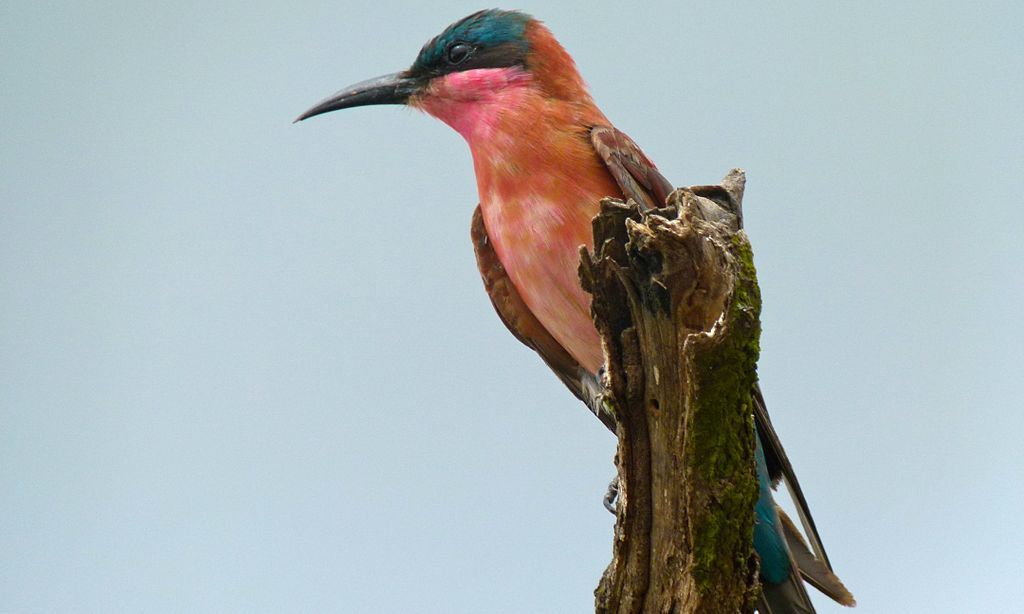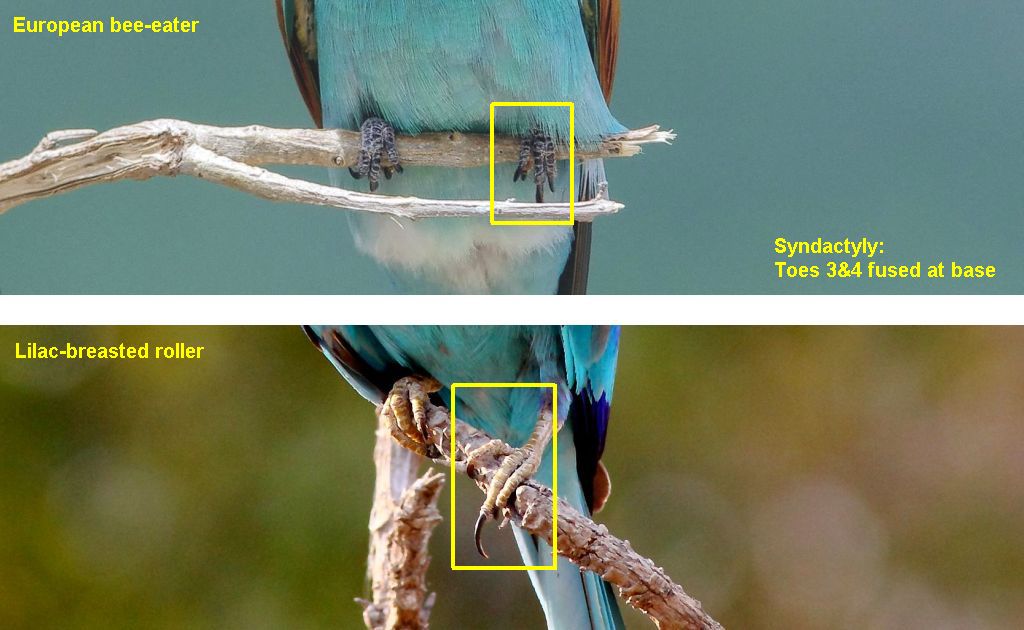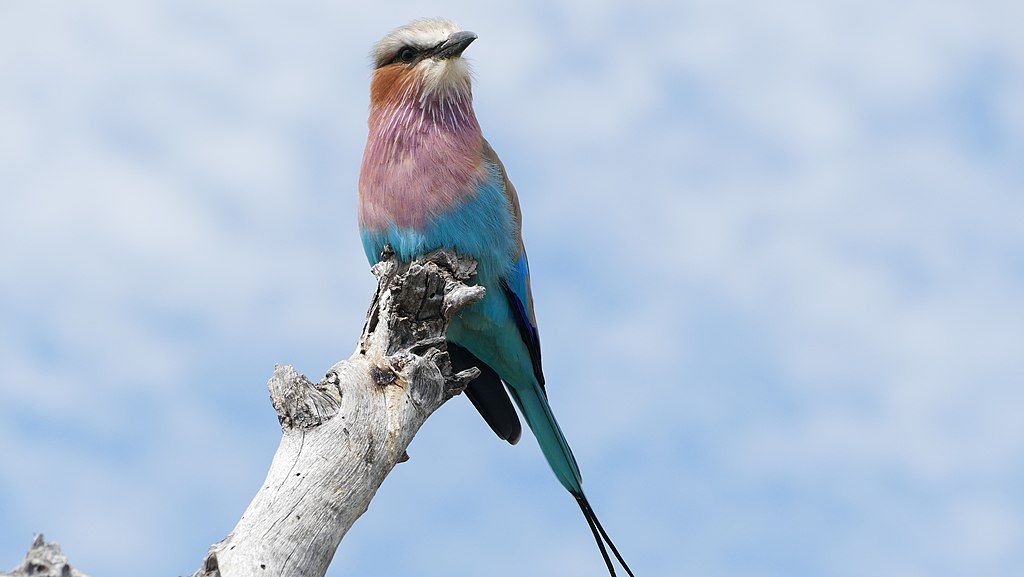
30 January 2024: Day 12, Livingstone, Zambia — Road Scholar Southern Africa Birding Safari. Click here to see (generally) where I am today.
Bee-eaters and rollers are both members of the Order Coraciiformes that includes kingfishers, motmots, and todies. All of them have colorful plumage, large heads, short necks, short legs, and usually syndactyly toes. In other words, two of their three pointing-forward toes (toes #3 and #4) are fused at the base.
Here’s what syndactyly looks like on a European bee-eater and a lilac-breasted roller.

Birds in this Order also have a behavior in common: They slam or thrash their prey onto hard surfaces to disarm or incapacitate them.
You’ve probably seen a kingfisher beat a fish to death. Watch this southern carmine bee-eater (Merops nubicoides) slam a bee.
Rollers get their name for their aerial acrobatic performances during courtship or territorial flights. They are often in the same habitat as bee-eaters because they both nest in mudbanks.
The lilac-breasted roller (Coracias caudatus) is every photographer’s dream. He’s as big as a blue jay, very colorful, and willing to perch prominently for a long time.

Like other Coraciiformes they slam their food, too.
p.s. We saw 5 species of bee-eaters and 4 species of rollers.
(credits and links are in the captions)